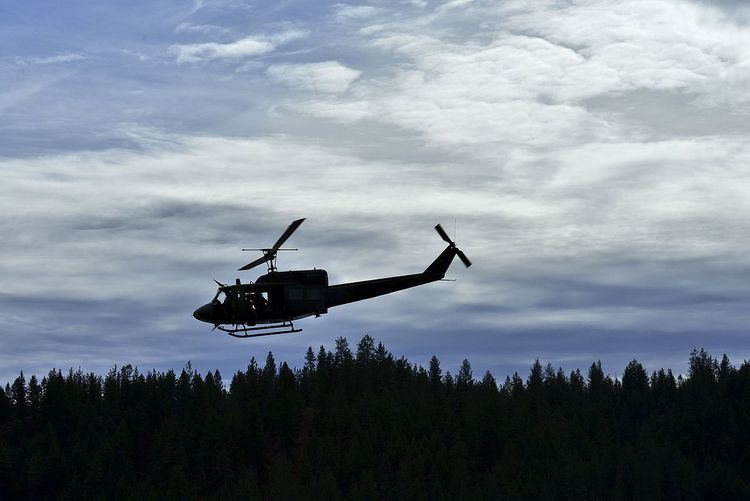Motto(s) Return With Honor | Role Survival training | |
 | ||
Active 1942-1944; 1966-present Part of Air Education and Training Command | ||
The 336th Training Group is a United States Air Force group with the mission to provide Air Force survival training. The group is located at Fairchild Air Force Base, Washington, with one subordinate unit at Naval Air Station Pensacola, FL, and one at Eielson Air Force Base, AK.
Contents
- Overview
- Courses
- World War II
- Background
- Fairchild Air Force Base
- Lineage
- Assignments
- Components
- Stations
- Aircraft
- References
The unit's historical lineage goes back to the 336th Bombardment Group which was a World War II United States Army Air Forces training organization. It served in the United States during World War II.
Overview
The 336th TG operates the United States Air Force Survival School. The school provides instruction in Survival, Evasion, Resistance, and Escape (SERE) training primarily to aircrew members. Instruction concentrates on the principles, techniques, and skills necessary to survive in any environment and return with honor.
Courses
World War II
The unit was established in mid-1942 by III Bomber Command as a replacement training unit (RTU) for B-26 Marauder crews. Graduates from Training Command technical, gunnery and twin-engine flight schools would be trained on B-26s, then after graduation be assigned to combat units overseas. Inactivated in May 1944.
Background
In 1949, Strategic Air Command (SAC) was concerned about the ability of its aircrews to survive and evade capture if shot down behind enemy lines. It established the 3904th Training Squadron at Fort Carson, Colorado on 16 December to provide survival and escape and evasion skills for its crews. Little more than a year later, on 21 October 1950, it established the 3904th Composite Wing to include the training squadron, the specialized 8th Air Rescue Squadron, and support units.
On 1 September 1951, the 3904th moved to Stead Air Force Base, Nevada and the United States Air Force Survival School was established under the wing. The Korean War made it apparent that this training should not be limited to SAC, and on 1 September 1954, the 3904th was transferred to Air Training Command (ATC) and renamed the 3635th Combat Crew Training Wing (Survival). This wing changed its name to the 3635th Flying Training Wing (Advanced) on 15 July 1958 when it added helicopter training to its mission. The 3635th continued to provide Survival, Evasion, Resistance and Escape (SERE) training at Stead until the spring of 1966, when Stead closed and the survival school was moved to Fairchild Air Force Base, Washington
Fairchild Air Force Base
The 3635th Wing did not move did not move with the school. Instead, ATC discontinued it at Stead on 15 June 1966 and established the 3636th Combat Crew Training Group at Fairchild in April 1966 to conduct survival training at its new location.
However, all aspects of SERE training were not unified under the group. By the early 1970s, Pacific Air Forces was running the Jungle Survival School at Clark Air Base, Philippines, while United States Air Forces Southern Command had a Tropical Survival School at Howard Air Force Base in the Panama Canal Zone. Alaskan Air Command had an Arctic Survival School at Eielson Air Force Base, Alaska and Tactical Air Command operated a Water Survival School at Homestead Air Force Base, Florida. In April 1971, these schools were brought under the group and squadrons were organized to conduct training at Clark, Fairchild and Homestead, while detachments were established at the other locations.
The group's 66th Training Squadron Detachment 2 was located at NAS Pensacola, Florida in 1993 where it conducted the Parachute Water Survival Course for aircrew flying aircraft with ejection seats jointly with the United States Navy. The separate Air Force School at Homestead was discontinued. Students attending SERE training at Fairchild, were sent on temporary duty to Pensacola for this training. However the school was moved to Fairchild in August 2015 and combined with the existing non-ejection water survival course to avoid the expenses associated with student travel.
